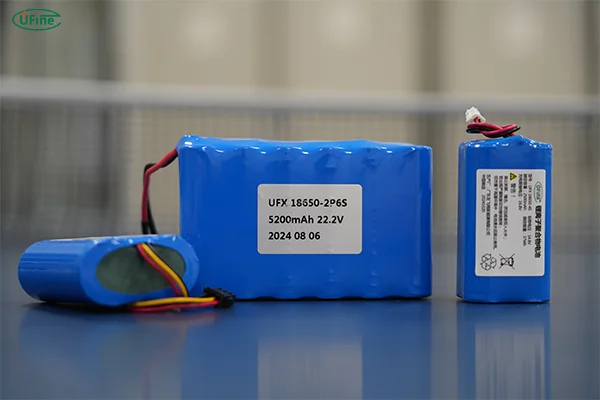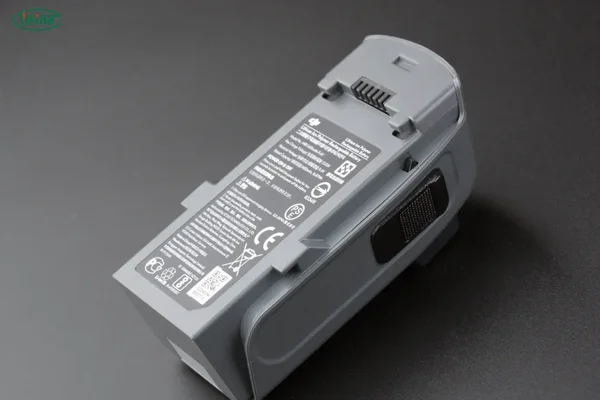Part 1. Learn RC
RC, or Remote Control, refers to devices that can be controlled remotely, typically via a transmitter or a controller. The term encompasses a wide range of hobbies and applications, from cars to drones, boats, and even planes.
In the RC world, remote control technology is a crucial element, especially when it comes to ensuring high performance and efficiency. Whether you’re racing an RC car, flying an RC plane, or piloting an RC drone, the power source behind your device plays a major role in its functionality. And that’s where LiPo batteries for RC come in, providing the necessary energy to power these devices.
RC vehicles and devices need specialized power sources that can provide high discharge rates and lightweight designs. LiPo (Lithium Polymer) batteries have emerged as the go-to choice for powering these types of devices due to their unique advantages in weight, size, and power output.
Part 2. What kind of battery is needed for RC?
RC devices are unique in their power demands. They require batteries that not only provide energy but can also deliver that energy quickly and efficiently. This is especially important in high-performance RC vehicles, such as race cars or drones, where a burst of power is needed for fast acceleration, sharp turns, or high altitudes.
Here are some key features needed in an RC battery:
-
High Discharge Rate: RC devices, especially those designed for fast speeds, require a battery that can handle sudden, high power demands without overheating. This is where the discharge rate comes into play. LiPo batteries excel here because they can discharge large amounts of power in a short amount of time.
-
Lightweight Design: Whether you’re racing or flying, weight is a critical factor. A heavy battery will reduce the vehicle’s efficiency and performance. LiPo batteries are popular because they offer high energy density without adding unnecessary weight.
-
Rechargeability: Unlike disposable batteries, LiPo batteries are rechargeable, offering long-term value for RC enthusiasts. Regular use and charging allow for consistent performance across multiple uses.
-
Capacity: The capacity of a battery, measured in mAh (milliamp hours) or Ah (amp hours), indicates how much energy it can store and thus how long your RC device will run. This is a critical factor when choosing the best battery for your RC needs.
Part 3. RC battery types
When choosing a battery for RC applications, there are a few types based on chemistry, each with its own advantages and disadvantages:
-
NiMH (Nickel-Metal Hydride): NiMH batteries were once the standard for RC cars, but they are bulkier and heavier than LiPo. While they provide a stable output, they have a lower power-to-weight ratio compared to LiPo batteries, which limits their use in high-performance RC vehicles.
-
NiCd (Nickel-Cadmium): These older batteries are rarely used today due to their low energy density and memory effect, which reduces battery life over time. They are less efficient and heavier than newer options.
-
LiPo (Lithium Polymer): LiPo batteries are the most popular choice for high-performance RC vehicles due to their lightweight design, high discharge rate, and customizable shapes. LiPo batteries offer excellent power-to-weight ratios, which is why they are favored in everything from drones to RC race cars. They can also be shaped to fit into custom spaces, making them highly versatile.
-
LiFePO4 (Lithium Iron Phosphate): These batteries are known for being safer than LiPo due to their stable chemistry, but they have a lower energy density. They are often used in larger, heavier vehicles, such as boats or trucks.
While NiMH and NiCd batteries have their place in the RC world, LiPo batteries have revolutionized RC devices because of their superior power output, lighter weight, and ability to be customized for specific needs.
NiMH Battery vs Li-Ion Battery vs NiCad Battery: How are they different?
Part 4. Why does LiPo battery for RC stand out?
So, why does the LiPo battery stand out for RC applications? Let’s break it down:
-
Lightweight: LiPo batteries are known for their ability to store more energy in a lighter, more compact package than other battery types. This is crucial for RC devices where every ounce matters. Whether you’re racing or flying, the lighter your device, the better it can perform.
-
High Power Density: LiPo batteries can discharge power quickly and efficiently, making them ideal for high-performance RC applications like racing cars or drones. This high power density ensures that your vehicle has the burst of energy it needs during intense moments.
-
Customization: LiPo batteries can be made in different shapes and sizes to fit into specific RC devices. This flexibility allows manufacturers and hobbyists to create the perfect battery for their needs. If you need a customized LiPo battery solution, Ufine Battery can tailor the battery to your specific needs, including unique connectors and configurations.
-
Faster Charging: LiPo batteries can typically be charged faster than NiMH batteries, reducing downtime between races or flights. This is essential for hobbyists who want minimal interruptions.
-
Longer Lifespan: When properly maintained, LiPo batteries have a long lifespan. They don’t degrade as quickly as other battery types, making them a reliable power source over time.
Part 5. What do the S and P on LiPo battery for RC mean?
You may have seen numbers like 2S, 3S, or 4P on LiPo batteries for RC devices. These are critical indicators that help you understand the voltage and capacity of the battery. Here’s what they mean:
-
S (Series): The “S” stands for series. The number before the “S” indicates the number of cells connected in series. More cells in series means a higher overall voltage. For example, a 3S LiPo battery has three cells connected in series, providing a nominal voltage of 11.1V (3.7V per cell).
-
P (Parallel): The “P” stands for parallel. When cells are connected in parallel, they increase the overall capacity (mAh or Ah) without changing the voltage. For example, a 2P LiPo battery would have two cells connected in parallel to increase the battery’s capacity while maintaining the same voltage as a single cell.
Part 6. LiPo battery for RC voltage
The voltage of a LiPo battery determines how much power it can provide at once. Different RC devices require different voltages to operate efficiently. Here are some common LiPo battery voltages for RC devices:
-
2S (7.4V): This is ideal for smaller RC cars and entry-level drones. It provides a moderate amount of power for basic applications.
-
3S (11.1V): A popular choice for mid-range RC cars, planes, and boats. This voltage offers a good balance between power and runtime.
-
4S (14.8V): Perfect for larger, more powerful RC cars, planes, and drones. The extra voltage gives these devices more speed and agility.
-
6S (22.2V): This voltage is typically used for high-performance drones and larger RC vehicles. It provides ample power for demanding applications.
Part 7. LiPo battery for RC connector
The connector of a LiPo battery for RC play a huge role in ensuring the safe and efficient operation of your device. Here are the most common connectors used in RC applications:
-
XT60: A widely used connector type that handles high current. XT60 connectors are commonly found in mid-to-high range RC cars and drones.
-
XT90: Larger than XT60, these connectors are designed for high-power applications, typically found in larger RC cars, trucks, and drones.
-
Deans (T-Connector): Known for its compact size and reliable connection, Deans connectors are often used in smaller RC devices.
-
EC3/EC5: Popular in RC planes and drones, these connectors offer a solid connection and are easy to work with.
-
JST: A small connector often used in mini drones or micro RC cars, where space and weight are a concern.
Explore Common Types of Lipo Battery Connectors
Part 8. What Ah LiPo battery should I buy?
The capacity of a LiPo battery, measured in Ah (Ampere-Hours) or mAh (milliampere-hours), determines how long the battery will last before needing a recharge. Here’s how to choose the right Ah for your RC device:
-
Small RC vehicles and drones: Choose a 1.5Ah to 3Ah battery. These smaller batteries are lightweight and provide enough power for short flights or races.
-
Medium-sized RC vehicles: A 4Ah to 5Ah battery will give your device enough power for longer sessions without adding too much weight.
-
Large or high-performance RC vehicles: For larger cars, planes, or drones, consider a 6Ah or higher battery. These devices demand more energy, and a higher Ah ensures longer runtimes.
A larger Ah rating increases the battery’s weight, so it’s important to find a balance between capacity and weight.
Related Tags:
More Articles

How to Choose the Best Floor Scrubber Battery for Commercial Cleaning?
Selecting the ideal floor scrubber battery ensures a long runtime, rapid charging, and minimal maintenance for efficient commercial cleaning operations.
Battery for Blower vs Battery for Leaf Vacuum: Which One Should You Choose?
Battery for blower vs leaf vacuum—learn the key differences in power, fit, and runtime to choose the right battery for your outdoor tool needs.
How to Choose the Right Battery for Blower?
Choosing the right blower battery? Consider voltage, capacity, chemistry & usage. This guide helps match the best battery for peak performance.
How to Choose the Best Insulated Battery Box for Lithium Batteries?
Choosing the Best Insulated Battery Box for Lithium Batteries? Discover key factors such as size, material, and safety for optimal protection and performance.
7 Critical Elements on a Lithium Battery Shipping Label
What must be on a lithium battery shipping label? Learn 7 key elements to ensure safety, legal compliance, and correct handling across all transport modes.




